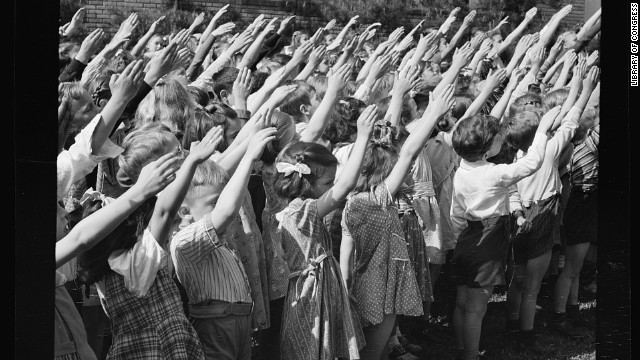Thus, on December 22, 1942, Congress, just before its Christmas break, took care of it. On that day, the amended Flag Code was passed, Section 7 of which decreed that the Pledge of Allegiance should “be rendered by standing with the right hand over the heart.”

Seventy one years ago — December 22, 1942 — Congress got the United States out of what had turned into an unexpectedly embarrassing situation.
It concerned the Pledge of Allegiance — specifically, something called the Bellamy Salute.
Most people today have likely never heard of it, but the Bellamy Salute was once a constant part of the country’s life.
Until 1892, there was no such thing as a Pledge of Allegiance.
Daniel Sharp Ford, the owner of a magazine called Youth’s Companion, was on a crusade to put American flags in every school in the country. He sensed that the U.S. needed a boost of patriotism. Keep in mind: Not even 30 years before, the Civil War had still been raging. National unity was a fragile concept.
As part of the campaign, Sharp gave an assignment to a member of his staff: Francis J. Bellamy, who was an author, a minister and an advocate of the tenets of Christian socialism. Sharp asked Bellamy to compose a Pledge of Allegiance to the flag. Bellamy wrote it, and it was published in the magazine.
It didn’t take long for the Pledge to become wildly popular, even omnipresent. At schools, at campgrounds, at public gatherings, in Congress, people routinely faced the flag and pledged their allegiance to it.
Because, inherently, there is something physically awkward about people simply standing in place, their arms hanging limply by their sides, staring at a flag and reciting a pledge, it was decided that devising a salute would be appropriate.
[…]















